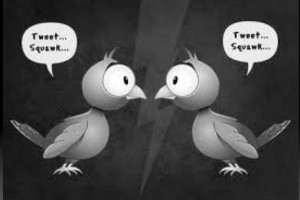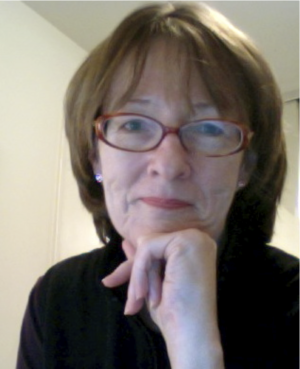 Plenty of people will tell you that self-publishing a book is free. And it is free if all you’re talking about is the cost of uploading your files to CreateSpace or Kindle or Bookbaby.
Plenty of people will tell you that self-publishing a book is free. And it is free if all you’re talking about is the cost of uploading your files to CreateSpace or Kindle or Bookbaby.
But publishing a book that can compete in today’s overstuffed marketplace requires a number of skill sets, some of which you’re going to have to job out. And that requires an investment on your part.
Here’s how the numbers break out for the average self-published writer:
- $1,500 for a simple copyedit. More if your book is long or if you need structural help.
- $800 for a cover design (front, back, spine). That’s after you realize that the cover templates offered on self-publishing websites are so bad as to be unusable. (No extra cost for using that same design for your ebook.)
- $0 for page layout. Most people use the free templates offered on self-publishing websites to format their books. But it’s a huge time sink, trust me on that.
- $0 for technical help. Once you have pdfs of your cover and interior, it’s relatively easy to upload the files if you have any tech savvy.
- $250 for ISBN numbers. If you want to avoid CreateSpace being listed as your publisher of record on Amazon, you’ll buy your own ISBN numbers at www.myidentifiers.com. One costs $125. Ten cost $250. You’ll need two–one for your print book and one for your ebook. You can’t buy two, of course.
- $25 for a barcode. You buy that from www.myidentifiers.com, too, and put it on your back cover.
- $? for marketing. You’ll be spending lots of time and some money in marketing your book. Perhaps the most common cost comes when you decide to submit your book to Kirkus, Foreword or Publishers Weekly for review. Cost: around $450.
Add it up, and you realize that you’ll be investing at least $2,500 in your publishing endeavor. Then the question becomes: are you, the publisher, willing to invest $2,500+ into you, the author?

Thanks for such a handy post. It’s very helpful for those who don’t have idea about self publishing book. But it’s very necessary that you should select a best self publishing company who provides honest prices. In most of the cases, when authors select self publisher, first they have made lots of promises regarding book publishing, but at the end even its hard for authors to get 1/3 of the profit from the book. So, while making selection of self publishing companies, authors should do a little research work about the publishing companies.
True. But it’s important to be clear on what’s “honest pricing.” When you work with a publisher, the money invested to make your book competitive in the marketplace (structural editing, copyediting, designing, laying out pages, proofing, distributing, accounting, marketing) is invisible to you, the author. But when you’re ALSO the publisher, you become responsible for covering the costs of those services. For authors who want to self-publish, it’s important to understand that producing a really good book usually requires pulling together a team of professionals with different areas of expertise–and paying “honest” money for their services.
This is really interesting, I think a lot of writers don’t factor in editing, design, formatting etc into their idea of what’s necessary to publish. Just because I can write doesn’t mean I can edit – sometimes I can’t even spell! Luckily I have an editor and a designer to help out with this.
It’s very helpful to have everything laid out like this and explained the way it has been here – this is a nicely done, neat and balanced article.
Some of the costs mentioned seem pretty steep to me as we include editing, design, formatting, a pre-print run of 50-200 books and a bit of publicizing in our packages (£350-750) but i suppose English costs are lower and it’s cheaper for us as we do it all in-house.
Though I agree with many of your points about self-publishing. It is definitely not free. I disagree with many of the costs you suggested. There is a range of costs and the one’s you mention are on the high side. The costs below relate to fiction writing. Non-fiction will incur higher editing costs.
Here are the more typical ranges I’ve found and some suggestions to make it less expensive.
Editing ranges from $300 on the low end to $1500 on the high end, depending on the kind of editing you need. A number of freelance editors from publishing are now offering services in the $500 range. Typical costs per page run from $2-$5 making the average 300 page book $600-$900. These numbers tend to involve both a developmental edit and general copy-editing. They do not apply to proof-reading which is another cost.
Cover design also has plenty of options, with a number of designers from small presses also freelancing. My research indicates the average is closer to $150-$300 for a professional wrap cover (used for print). I’ve never seen the pricing of $800 you quote. Even over-priced designers like Lulu (~$400) or Book Baby ($300-$500) don’t cost that much. The only reason to pay more than $300 is if you are looking for original artwork. Most everyone uses stock images that are manipulated to make a unique cover design. Look for book covers in your genre and see the credited cover designer. There are many qualified, knowledgeable, cover designers who will provide amazing wrap covers for $150.
Though you can use the free templates for page layout, one has to ask why you would choose to have a vanilla interior when you are paying so much for a good cover and editing already. I suggest purchasing a professional template from someone like Joel Friedlander for $40-$80. These are Microsoft Word templates that include pagination, left-right spine gutters, left-right header differences, and nice graphic designs for chapter heads and dividers.
$0 for technical help. I agree for those who do have some tech savvy. Unfortunately, many writers do not. This leaves them to impose on friends for each book or to hiring. Average technical assistance help is $20-$40 per hour.
ISBN numbers can be purchased in many different ways. Yes Bowker (mydentifiers.com) is the primary U.S. source, but unless you are buying 100 at a time it is ridiculously expensive. Those who plan to only write two or three books should choose the CreateSpace “imprint” ISBN for $10. The “publisher of record on Amazon” is a matter of how one enters that into the metadata fields. Many people mistakenly enter “CreateSpace” or “Amazon” as the publisher when using CreateSpace, when in fact the self-published author is the publisher. CreateSpace is the distributor. Yes, even the $10 imprint purchase for an ISBN would still shows CreateSpace as the publisher in the barcode, if anyone wanted to decode the barcode. However, in the Amazon information listing and all put in that field when they completed the book information.
As for ebooks, there is no requirement to have an ISBN at any of the major distributors. Amazon will obscure your ebook ISBN anyway with their own inventory number. For distribution in other countries (which is where the ebook ISBN might come into play), if you don’t supply one the individual distributors will for those countries that require it. I happen to favor having an ebook ISBN, but then I also produce five or more books each year and buy my ISBNs in groups of 100.
Barcodes are free. There is no reason to pay for one. If you are publishing through CreateSpace they generate one for you and put it on the back of your book in the bottom right corner. If you are publishing through Ingram Spark or LSI they will also generate one for you and ask you to place it on the back of the book wherever you wish. If you are publishing through an entity that does not generate the barcode for you, there are a number of places on the web where you can get it for free. My favorite resource is Bar Code Robot.
As for marketing, my experience indicates that spending any money on marketing for the first couple of books is a waste of time and money. The best thing a fiction writer can do is to write the next book and build a following. Most first books generate sales of less than 500 in the first year. To spend $450 on a review means that review would need to net sales of 225 titles on the average book in order to make the money back. Once three or more books are in your backlist, then it might be worthwhile to spend some money. IMO, until then it is a waste.
This is reflective of my experience both as an author and as the founder of Windtree Press, an author publishing cooperative.